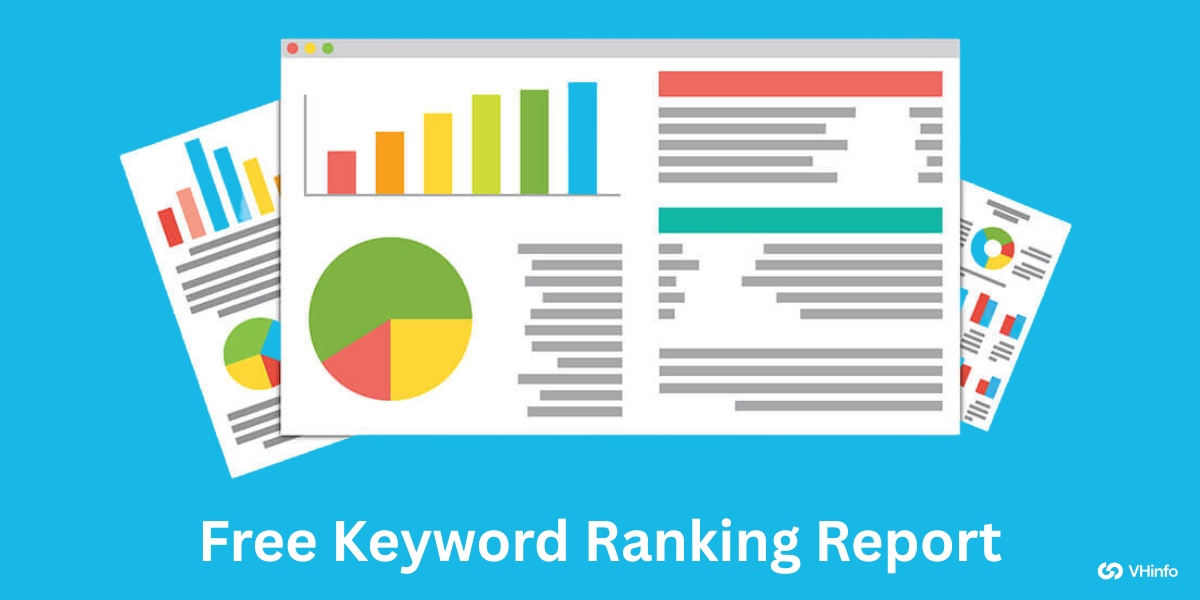Creating a blog post that ranks well in Google search starts with picking the right keywords. Keywords are the words people type into a search engine when they look for information.
Using the right number of SEO keywords and keeping keyword density around 1–2% helps your content show up for relevant search queries.
Good keyword research with tools like Google Keyword Planner or Ahrefs finds the best primary keyword and related keywords for your main topic. Mixing short-tail and long-tail keywords makes your content helpful for both broad and specific searches.
Avoid keyword stuffing by weaving in terms naturally so your readers enjoy the content.
With VH Info’s expert tips, you’ll learn how many keywords to use and how to use them for better organic traffic and a great user experience.
The Importance of Keywords in SEO

What Are SEO Keywords?
SEO keywords are the words or phrases people type into a search engine like Google when they look for information. These relevant keywords tell search engines what your piece of content is about and help your blog post appear in search results.
Choosing the right keywords and using them naturally in your content writing brings more organic traffic to your site.
Why Keyword Quantity Matters?
The number of keywords you use affects how well search engines match your page to a search query. Too few keywords can make your page hard to find, while too many leads to keyword stuffing, which hurts user experience and can lower your ranking.
Finding the right balance ensures your content is clear, helpful, and ranks better in search engine results.
Primary Keyword Vs. Secondary Keyword Vs. Tertiary Keywords
- Primary keyword is the main topic you focus on in a single page, like the single most important term.
- Secondary keywords are related terms that support and add context to your main topic, improving semantic richness.
- Tertiary keywords are extra keyword variations or related keywords that you sprinkle in to cover more search intent without overloading your text.
Factors That Determine the Number of Keywords to Use

The right amount of keywords to use will depend on a few things.
Website Size and Content Volume
A big website with many pages can target more SEO keywords.
Each page should have a main keyword. It can also have some extra keywords to help it. If you only have one or two pages, use fewer but better keywords on each page. This will help avoid keyword stuffing. It also keeps the user’s experience nice and smooth.
Having more content lets you use keywords better. This way, each piece of content stays on its main topic.
Target Audience and Niche Specificity
Knowing who reads your content is important. It helps you pick the right keywords.
If you aim for a big group, use one main keyword. You should also add some related keywords. This will help capture various search queries. For a small niche, like a special SaaS tool, use long-tail keywords. These should match what your readers want to find.
This method helps you reach people who may find your blog useful. It can also increase your organic traffic.
Competition and Keyword Difficulty
When many sites use the same word, it is harder to rank well. This is known as keyword difficulty or competition.
If a word is too hard to rank for, choose related but simpler words. You can also use longer phrases that include your main word. This way, you can compete better. Use a tool to check how many people search for these words.
Also, look at how hard it is to rank for them. Find a good mix of popular words and those with less competition for the best results.
How Many Keywords Are Ideal For SEO in 2025?

Short-Tail Vs Long-Tail Keywords
Short-tail keywords are 1–2 word phrases with high search volume and lots of competition, like “seo keywords” or “digital marketing”. They help drive broad organic traffic and boost brand visibility but can be hard to rank for.
Long-tail keywords are 3+ word phrases that match specific user intent, such as “how many keywords for seo guide 2025,” offering lower competition and higher conversion rates.
Using one clear short-tail primary keyword plus 2–3 long-tail secondary keywords gives you the right balance between volume and relevance.
Keyword Density Recommendations
Keyword density is the percentage of times a keyword appears within your content compared to the total word count. Aim for about 1–2 uses per 100 words (1–2% density) to signal relevance without triggering keyword stuffing penalties.
For a 1,000-word blog post, include your primary keyword 10–20 times and mix in related keywords and variations. This approach keeps your seo content natural, helps search engines understand your main topic, and maintains a good user experience.
Balancing Quality and Quantity
Quality content that answers user questions and matches search intent is more important than cramming in the highest number of keywords.
At the same time, you need enough content volume—ideally 1,000–1,500 words per page—to cover your main topic, related topics, and secondary keywords naturally.
Strike the right balance by planning content around a single primary keyword, supplementing with 2–4 secondary keywords, and focusing on helpful insights over keyword frequency alone. This balanced strategy drives sustained organic traffic and positions you as an seo expert.
Common Mistakes When Choosing Keywords For SEO

Choosing the right keywords needs a careful plan. But many things can go wrong.
Keyword Stuffing
Keyword stuffing is when you fill your content with too many keywords. This makes your writing feel strange and hard to read. It can hurt how users feel about your site. It may also lead to penalties from search engines for keyword stuffing.
Instead of cramming in too many words, keep the keyword density between 1% and 2%. You should add related keywords naturally. This way, both your readers and Google will be pleased.
Ignoring User Intent
User intent is what people want when they type in a search. It is important to know this.
If you only think about search numbers, you may miss the point. You need to consider what users want.
They might want to learn something. This is called informational intent. They could also be looking for a page. This is known as navigational intent. Or they might want to buy a product. This is called transactional intent.
To create good content, always link your main keyword and other words to the user’s goal. This way, your content will feel useful and relevant.
Overlooking Long-Tail Keywords
Long-tail keywords are longer phrases that are more specific. They usually have less competition.
However, they can lead to higher conversion rates. If you skip these, you miss out on traffic. This traffic comes from people who know what they want. You should mix long-tail keywords with your main terms.
This helps cover more search needs. It can also boost your organic traffic. Using less crowded keyword options is a smart move.
Tools to Help You Find the Right Number of Keywords

Many keyword research tools can help you find the best keywords for your search engine plan.
Google Keyword Planner

Google Keyword Planner is a free tool for keyword research. It shows the search volume and competition for each SEO keyword. You enter your main keyword or related topics. Then, it gives you ideas for keywords and related words.
This tool helps you decide how many keywords to use on each page. It shows which terms bring in the most traffic from search engines. It also helps you group keywords into themes.
This way, you can avoid using too many keywords. You can focus on writing good content for your main topic.
SEMrush

SEMrush is a tool you pay for. It helps you analyze your rivals and find keywords. You can see which search terms your competitors rank for. This tool also helps you find gaps in your own plan.
SEMrush gives scores for keyword difficulty. This shows you how many keywords you can target. It also tells you which keywords to focus on. The tool tracks how you use keywords and their density.
This helps you keep a good mix of quantity and quality content. You can do this without hurting the user experience.
Ahrefs

Ahrefs is a well-known tool for finding keywords. It shows how many times people search for words. It also gives click stats and how hard it is to rank for keywords. The Keywords Explorer part suggests other word options and similar terms for your main keyword.
Ahrefs has a rank tracker too. This helps you see how your chosen words do over time. You can then change the number of words and where to place them in titles, headings, and alt text. This regular check helps improve your site’s search engine rank.
Other Useful SEO Tools
Google Analytics is a tool that helps you see which keywords bring real traffic to your site. It also helps monitor what users want on your pages. You can find free LSI keyword generators. They give you ideas to make your content richer and clearer.
Another helpful tool is AnswerThePublic. It shows common search questions linked to your blog topic. Using these tools together helps you choose the best keywords. This way, you keep the right keyword amount and write clear SEO content that helps readers.
Best Practices For Keyword Usage in Your Content

Natural Keyword Integration
Write your content like a friendly story. It should not feel like a list of keywords. Use your main keyword and related words where they fit.
Place them in sentences that explain your main topic. This helps keep your keyword density around 1–2%. It also avoids keyword stuffing. This makes your SEO content clear for readers and search engines.
Writing naturally improves user experience too. When people enjoy reading, they will stay longer on your blog post.
Using Keywords in Titles and Meta Descriptions
Put your main keyword in the page title. Also, include it in the meta description at the top.
This helps Google and readers know what your content is about right away. Keep titles under 65 letters long. Make sure your meta descriptions are around 150 to 160 letters to avoid being cut off. You can add 1 or 2 extra keywords in the meta description for more context.
Doing this can help improve your search engine ranking. It also attracts more organic traffic to your site.
Regular Keyword Performance Review
Check how your chosen keywords are doing every few months. You can use tools like Google Analytics or a keyword tool. Look at which keywords get the most searches.
Also, find out which pages have the most organic traffic. If a keyword is not working well, try a related keyword instead. You can also use a long-tail keyword to fit user needs better. Regular reviews help you adjust your keyword use.
They also let you update alt text and improve titles. This helps keep your content fresh and effective.
FAQ’s:
How Many SEO Keywords Should I Use Per Page?
A good rule of thumb is one primary keyword per page, supported by 2–4 secondary keywords and a few tertiary keywords.
This keeps your keyword density around 1–2% in a 1,000–1,500 word blog post, avoiding keyword stuffing. Using the right keywords in your page title, headings, and body helps search engines and readers understand your main topic.
Balance the number of keywords so your seo content writing feels natural, boosting organic traffic and a positive user experience.
Is Keyword Density Still Relevant?
Yes, keyword density guides how often you use a keyword, but it’s not a strict rule. Aim for about 1–2 uses per 100 words to signal your target keyword without harming reader flow.
Modern search engine optimization also values semantic richness and related terms alongside exact matches. Focus on writing quality content that naturally answers user questions and fits search intent, rather than obsessing over exact percentages.
Is Too Many Keywords Bad For SEO?
Yes—overloading your page with a bunch of keywords leads to keyword stuffing, which hurts user experience and can trigger search engine penalties. When you force terms in, readability drops, and your content writing feels spammy.
Instead, spread keywords across a single page in titles, meta descriptions, headings, and body text. This balanced keyword usage keeps your content clear and helps search engines rank you higher.
How Does Search Intent Factor Into Keyword Strategy?
Search intent is what a person wants when they type a search query—to learn (informational), find a site (navigational), or buy something (transactional). Match your primary keyword and related keywords to that intent for the best results.
For example, use “how to” long-tail keywords for guides and “buy” keywords for product pages. Understanding intent improves user experience and keeps people on your page longer, boosting organic traffic.
Why is Semantic Richness Important in Content?
Semantic richness means adding related keywords, keyword variations, and latent semantic indexing terms alongside your main keyword.
This helps search engines understand context and keeps your content from repeating the same word too often. It also improves user intent matching, since you cover different ways people search.
Rich, varied language makes your SEO content more helpful, drives better search engine results, and enhances overall user experience.
How Many Keywords Should A Page Target?
A page should target one primary keyword, plus 2–4 secondary keywords and a handful of tertiary keywords. This mix covers various search queries without diluting focus. Keep your keyword density at about 1–2% and spread keywords in titles, meta descriptions, headings, and alt text. This approach balances quality content with strategic keyword usage to attract both broad and niche organic traffic.
Should I Always Target A Specific Keyword?
For core pages, yes—pick a single primary keyword to focus your seo content writing and link-building efforts. Blog posts can be more flexible, using clusters of related topics and keyword variations to build topic authority.
Always start with keyword research to find the right balance of high-volume and long-tail terms. Targeting a clear keyword helps search engines know your main topic, while related keywords add depth and context.
Can I Rank Without Targeting Specific Keywords?
You can rank high by providing great and clear content. This content should meet what users want and answer their questions.
Using specific SEO keywords can help your page show up more. Search engines look for these words to link pages to user queries. Even if you don’t stick to one keyword, using related words helps too. Focus on the meaning of your text for better results.
Clear headings and good keyword use are also important. A strong user experience gives you a better chance of ranking well.
Conclusion
Choosing the right number of keywords is very important. It helps your blog posts show up better in search results. This change can bring more visitors to your site. It does this without costing you anything extra.
It is best to focus on one main keyword for each page. You can add 2-4 extra keywords to reach more searches. Keeping the keyword density at about 1-2% helps your content feel smooth. This also keeps you from adding too many keywords at once.
A mix of short-tail and long-tail keywords obtained from reliable tools like Google Keyword Planner or Ahrefs enhances the relevance of your content to user queries. Placing keywords strategically in titles, headings, meta descriptions, and throughout the main body of text signals search engines about the content’s subject matter.
Monitoring how well your keywords work is important. You can use tools like Google Analytics for this. These tools help you see what is working and what is not. This way, you can make changes as needed. By doing so, you optimize your content.
As a result, your content can rank better on search engines.
When you choose keywords, think about what users want. This is important for your content plan. Knowing what users search for helps you meet their needs. It can also improve your website’s rank on search engines.


